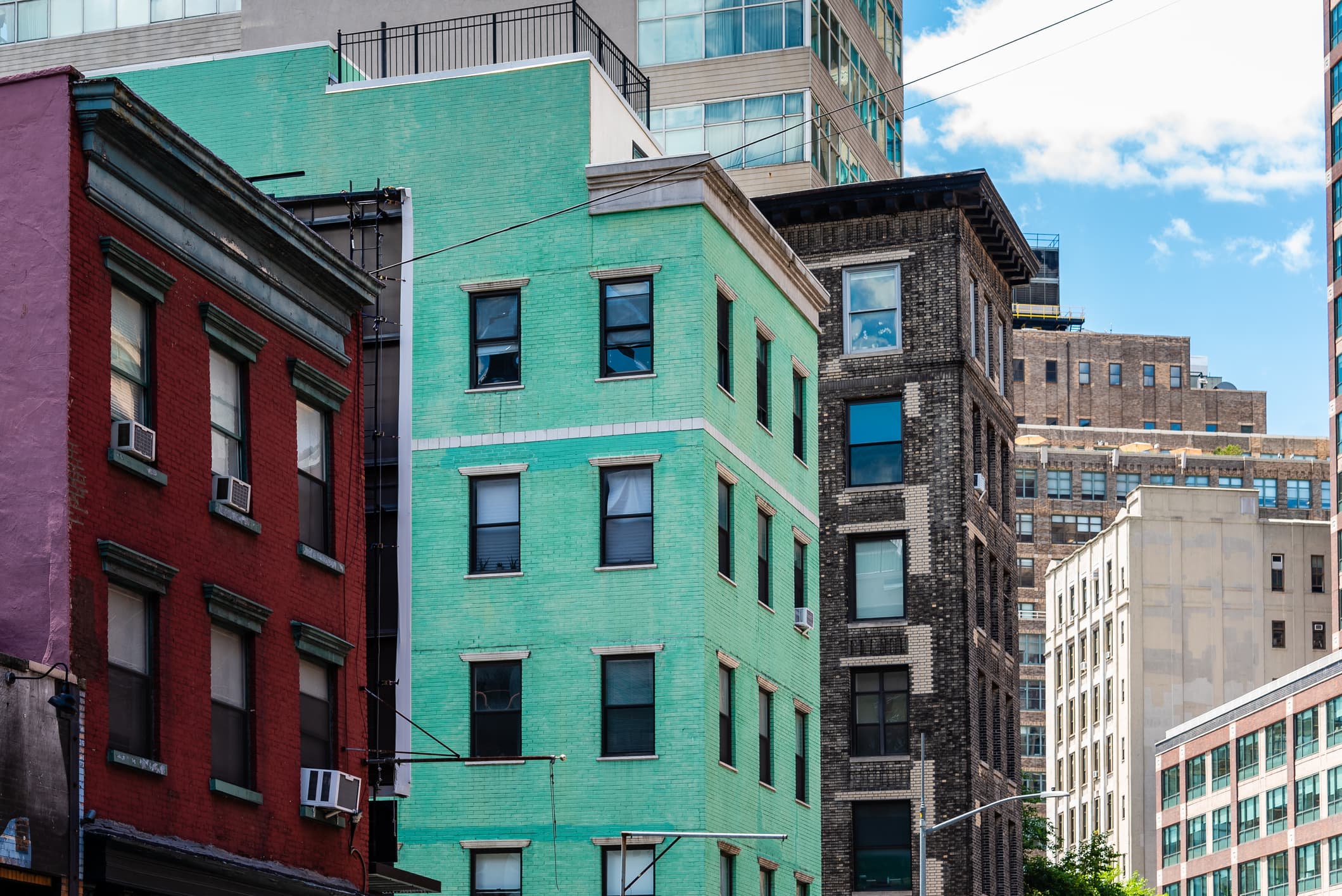
JJFarquitectos | iStock | Getty Images
The coronavirus pandemic brought unprecedented hardship to renters, at one point leaving as many as 40 million people at risk of losing their homes.
That the situation got so bad, so quickly for tenants revealed long-lasting issues of housing instability in the U.S., caused by rapidly rising rents and stagnant wages, advocates say.
It also led to action.
Over the last two years, states and cities have passed dozens of laws granting tenants additional rights.
“The Covid pandemic has seen a new era of renter protections across the U.S.,” said Kshama Sawant, a member of the Seattle City Council.
“Facing this mountain of debt and a likely tsunami of evictions, tens of thousands of renters have responded by fighting back – organizing their buildings and uniting with tenants across cities and across the country,” she said.
Pandemic interventions
Eviction rates were expected to balloon to historic levels during the public health crisis. Instead, they dropped off.
That reversal is due to the $45 billion pot of rental assistance allocated by Congress – for perspective, just $1.5 billion was earmarked for renters during the Great Recession – as well as the federal and local moratoriums on evictions, experts say.
The Centers for Disease Control and Prevention announced in September 2020 a nationwide ban on most evictions, and despite many legal challenges, that policy mostly remained in effect until this past August.
More from Personal Finance:
88% of Americans are worried about inflation
Where to make and save money as inflation rises
46% of Americans expect to retire in debt
In the absence of a federal eviction ban, many states and cities have kept their own limits on the proceedings in place, currently leaving half of renters in the U.S. with some protections against displacement.
New Jersey and New York’s eviction moratoriums will last until January 2022. Los Angeles, Seattle and Austin also still have citywide bans in effect.
Meanwhile, since federal rental assistance has been slow to reach people, Oregon, Massachusetts, Michigan, Minnesota, Nevada and Washington, D.C., allow renters to temporarily pause an eviction against them if they can show that they’re in the process of applying for the aid.
Before the pandemic, the federal government had never issued a countrywide ban on evictions. Locally, after certain natural disasters and the Sept. 11 terror attack, governors and courts announced just one week or two week-moratoriums.
A new era for renters
Other nascent policies will likely outlive the pandemic, and aim to address deep-rooted problems for renters.
Before Covid, 1 in 2 renters in the U.S. were considered rent-burdened, meaning a third or more of their income went to their housing, according to the Government Accountability Office. Many tenants spent over half of their earnings on their rent, research shows.
Vicente Sarmiento, the mayor of Santa Ana, California, said his city has lost more than 20,000 residents over the last decade, largely due to rising housing costs. The current population is around 330,000.
“People are still working here, but they can’t afford to live here,” Sarmiento said.
The city in October passed a bill limiting rent increases in most buildings to no more than 3% during any 12-month period, or 80% of the consumer price index change for the year, whichever is less. (If there’s no inflation in a year, rents can’t go up at all.)
Tenant advocates had been rallying support for the policy, which went into effect Nov. 19, for years, Sarmiento said. The hardship caused by the pandemic, he said, was the final push.
“I saw this desperation from residents who realized they couldn’t sustain these increases,” he said.
Meanwhile, residents in Saint Paul, Minnesota, voted this month in favor of a rent control policy that will also limit increases to 3% a year.
In September, legislators in Seattle passed a bill requiring landlords to pay the moving costs for tenants who can’t afford to stay in their homes after their rent is increased by 10%, or more. The policy, which was modelled after a similar one in Portland, Oregon, will go into effect in July.
“The new law will become a bulwark against the epidemic of what’s known as ‘economic eviction’ – a landlord pushing a tenant out by increasing rent by outrageous amounts ,” said Sawant, whose office introduced the bill. Rents have soared by nearly 70% in Seattle since 2010.
“This just shows that the private market has utterly failed to meet the needs of ordinary people,” she said.
Her office has also introduced legislation to cap rent increases in Seattle. “We won’t stop until we win full rent control,” Sawant said.
The Covid pandemic has seen a new era of renter protections across the U.S.
Kshama Sawant
member of the Seattle City Council
Landlord groups and some economists criticize rent control.
“These policies interfere with a housing provider’s ability to respond to economic and operational needs and hurt local communities by driving out existing housing providers and dis-incentivizing development of new housing,” said Greg Brown, senior vice president of government affairs at the National Apartment Association.
But it’s rising rents, Sarmiento said, that is most endangering Santa Ana.
“It really destabilizes our economic health,” he said. “If you’re having to spend 70% of your wages on rent, you’re not buying goods and services in the community. People aren’t shopping.”
The pandemic has also accelerated the movement to get renters free legal representation.
Housing advocates have long complained that most landlords show up to eviction hearings with a lawyer, while tenants usually can’t afford one.
Over the course of the pandemic, seven cities (Boulder, Baltimore, Denver, Seattle, Louisville, Minneapolis and Toledo), and three states (Washington, Connecticut and Maryland) passed legislation guaranteeing renters at risk of eviction the right to legal representation.
“It was an unbelievable confluence,” said John Pollock, coordinator of the National Coalition for a Civil Right to Counsel.




